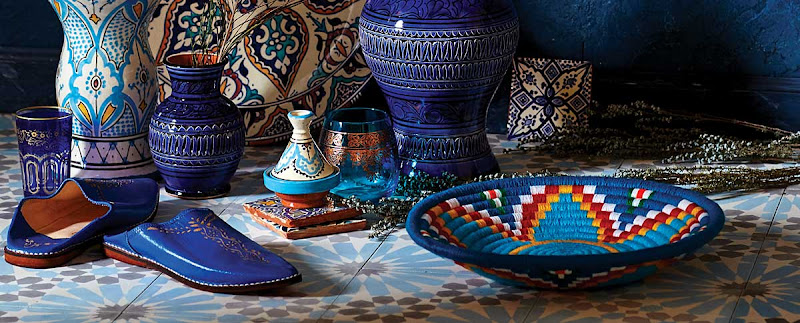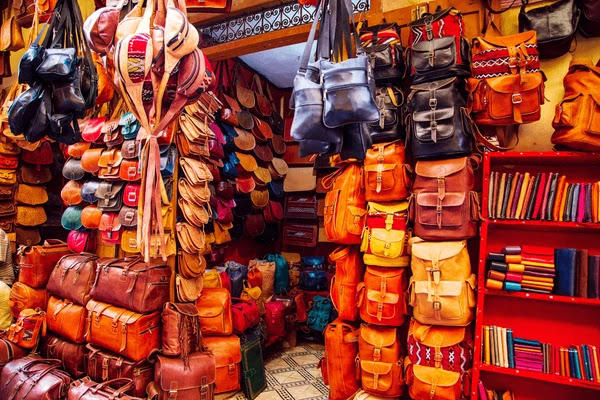Leather crafts
Moroccan leather is a component of Moroccan craftsmanship renowned for centuries throughout the world. It was in the 14th century that we began to hear about “morocco”, a word that designates goat and sheep leather from Morocco.
Leatherworking is a tradition linked to many cities in Morocco, such as Fez, Meknes, Marrakech, Rabat, Tetouan, and Tangier, where half of the leather production comes from. Over time, this tradition of leather working has continued since today we still find entire neighborhoods with colorful vats, where many tanners are active as in Fez and Marrakech and which offer quite extraordinary spectacle.
Today, the many leatherwork items present a considerable income source for artisans. they are the leader in exports of handicraft products after carpets.
History of leather crafts
Leather is one of the products known since ancient times. Archaeologists have found Egyptian sculptures that depict artisans working with leather. In addition, remains of leather from around 6,000 years ago were discovered.
Today, the discovery of chemical methods greatly facilitates this step.
The transformation of skin into leather
The transformation of the hide to obtain leather on a product requires a high level of perfection for the production to be qualitative. Several complicated and complex steps follow one another and must be executed with perfection in order to achieve perfect leather.
The conservation stage:
leather river work
The first operation in the tannery consists of soaking the hide in a basin of clean water in order to get rid of impurities, namely the blood of the animal and the salts accumulated inside. The leather is soaked for a period that varies depending on the season, needs and skin type. It varies from one night in summer to seven days in winter. The objective is to restore the water that the skin lost during salting and conservation. The skin returns to its initial weight and swells slightly.
2- Calcining
Called “Iferd” in Arabic, during this process, the raw hide is soaked in a basin which contains a mixture of cow urine, quicklime, ash, water and salt. This caustic mixture helps break down the strength of the leather, loosening excess grease and flesh, and hair that has remained on it. Placed in this basin for two to three days, the products weaken the hair strands and the inner surface of the scalp and thus prepare for the next step, namely hair removal. The skins macerate in this mixture for 15 to 20 days in summer and up to 30 days in winter.
3- Hair removal
Then, the tanners remove excess hair and grease by hand in order to prepare the leathers.



